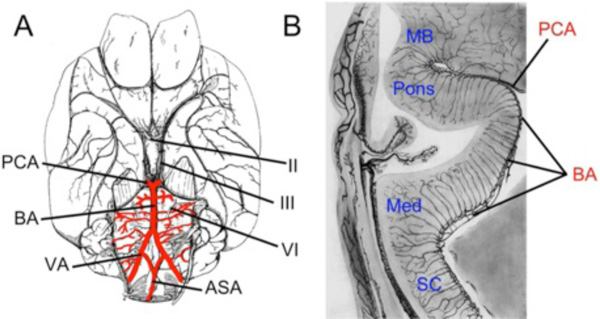Fig. (13) Monotremes and marsupials: The gross anatomy of cerebral vasculature is similar between the spiny anteater (Tachyglossus
aculeatus) and the opossum (Didelphis virginiana). A. Ventral view of a T. aculeatus brain modified after Shellshear [86] showing the
caudal to rostral flow of blood as the vertebral arteries (VA) take over as the main hindbrain supply. The VA give off medially-directed
commissural branches that form the anterior spinal artery (ASA) and then fuse to form a midline, unpaired basilar artery (BA). The BA gives
off numerous transverse branches before terminating as the paired posterior cerebral arteries (PCA) as seen in other mammals. Vertebrobasilar
vessels are similar in Didelphis (not shown). B. Sagittal section of an ink-injected opossum brainstem modified after Wislocki [94]
showing the BA terminating as the PCA. Note the presence of unique nonanastomotic capillary loops branching from the main cerebral
vessels. This differs significantly from the normal capillary network seen in all other mammals.


